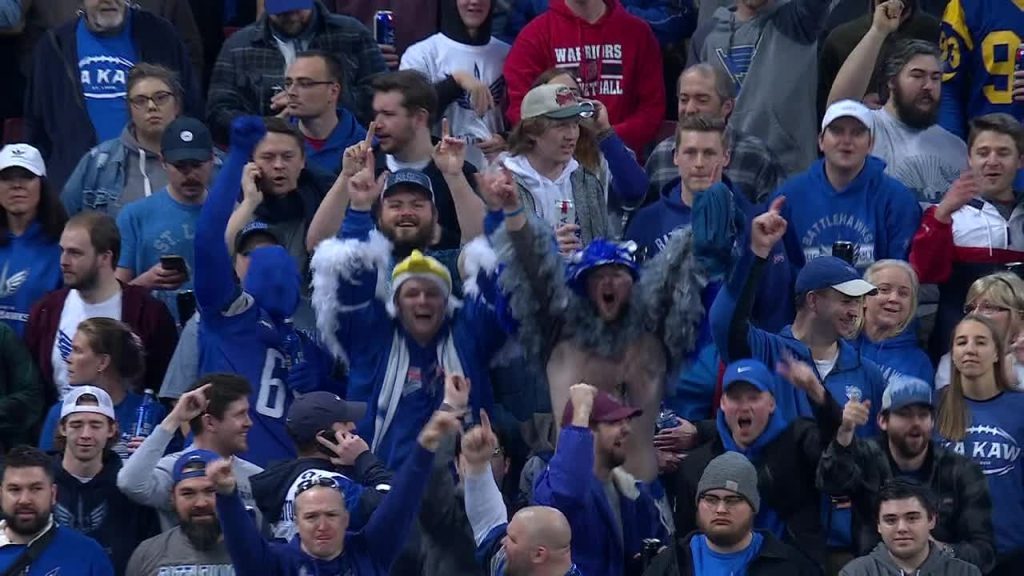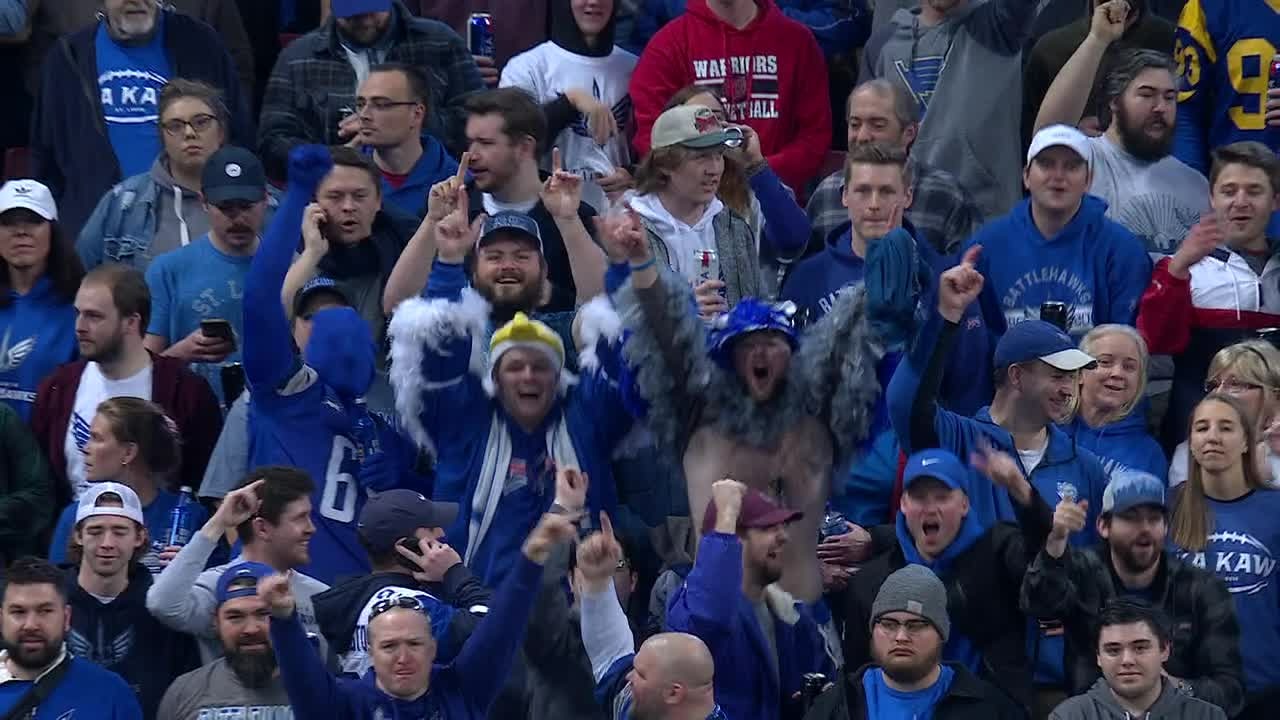
We can quibble about what records were truly set on Sunday; what can’t be quibbled with is that the reported 38,310 fans packed inside The Dome at America’s Center, almost 9,000 more than the biggest crowd St. Louis drew in the same arena in 2020, is the template for what the XFL’s owners hope the league becomes.
Ideally, each of the eight cities in the XFL would embrace their franchises the same way St. Louis has. They’d pack the stadiums, in full team regalia, loud and proud. That’s not reality, however. Those teams that have returned from 2020 have struggled to draw, falling below the attendance levels from three years ago.
The “why” could be a combination of fans feeling burned by the shutdown of the league in 2020 and the general pessimism of the long-term success of spring football, having seen leagues full of promise disappear in the blink of an eye in the past. Dany Garcia, Dwayne Johnson, and Gerry Cardinale have spoken often about building for the future, a future that fans understand may never come.
Therefore, it’s incumbent upon ownership to prove it – prove that they’re in it for the long haul, prove that they’re dedicated to these markets. Returning for year two will be a big step in that direction as it’s an accomplishment neither previous version of the XFL has reached. What the XFL does in those markets in the offseason will also be a determining factor in fan support for 2024 and beyond: Will players be active in those communities? Will the league dedicate more resources to marketing and advertising? Will tickets go on sale earlier to allow a longer runway for fans to buy in?
St. Louis is certainly an outlier, just as they were in 2020: A city hungry to prove Los Angeles Rams owner Stan Kroenke wrong for moving the team to La La Land in 2016. Fans wanted a football team to embrace, and they were willing to wait three years to do it all over again. They were insulted by Kroenke’s move; for them, it was a matter of pride. So there they were on Sunday, 38,000 strong, with an obscene chant featuring Kroenke’s name.
These weren’t passive observers, however; they were all-in on the Battlehawks. Whether it was merchandise from the 2020 or 2023 version, fans were clad in blue, gray and white all over the stadium (with some vendors on site reportedly having sold out of merch). It was not unlike a scene you’d see at an NFL or major college football game.
There is much room to improve the attendance numbers we’ve seen this season (two cities, DC and Seattle, have already seen increases from game one to game two). Consider it a baseline. The XFL’s success won’t be won or lost at the turnstiles; but if more cities show up and show out like St. Louis, even if it takes another year or two, it’s less ammunition for critics to use and a more attractive product for the TV viewer (where the real money is for the league). After all, would you rather watch a game played in Las Vegas at staid Cashman Field in front of maybe 6,000? Or in front of a raucous 38,000 inside the dome in St. Louis?
Ideally, each team cultivates its own identity and fanbase and is able to win enough to get fans to attend these live events. But that’s going to take time. Time the XFL’s ownership says they’re ready and willing to take to make this version a success. There’s only one way to prove that to be true, but that’s going to take time as well. Ownership saw on Sunday what the future of the league can look like if they play their cards right. Hopefully, they’ll hold on long enough to see that vision come to fruition.














